Lunar Eclipse
20 January 2019
The 20 January 2019 lunar eclipse received a great deal of advanced exposure in the press because, weather permitting, it was going to be visible throughout all of North America and also because it was being promoted as a Super Wolf Blood Moon (see the explanations of these terms at the end of this web page). Although the local weather forecast for my area of Arizona was for clouds on the night of the eclipse, I decided that it would be worth trying some photography of the event. Because there are no fewer than four eclipses per year, and no more than seven, and because lunar eclipses can be seen by all the humans on half of the Earth, I have seen many lunar eclipses and will no longer get up at inconvenient hours to view one. In addition, the event takes about three hours to run its full course (with respect to the umbraof the Earth's shadow, which is the part that everybody is concerned about), which is a long time to be outside operating a camera, in particular if it is cold. So the image below was taken of the then gibbous moon on the night before the eclipse to deterrmine what might be productive the next night, which will be cloudy, during the lunar eclipse.
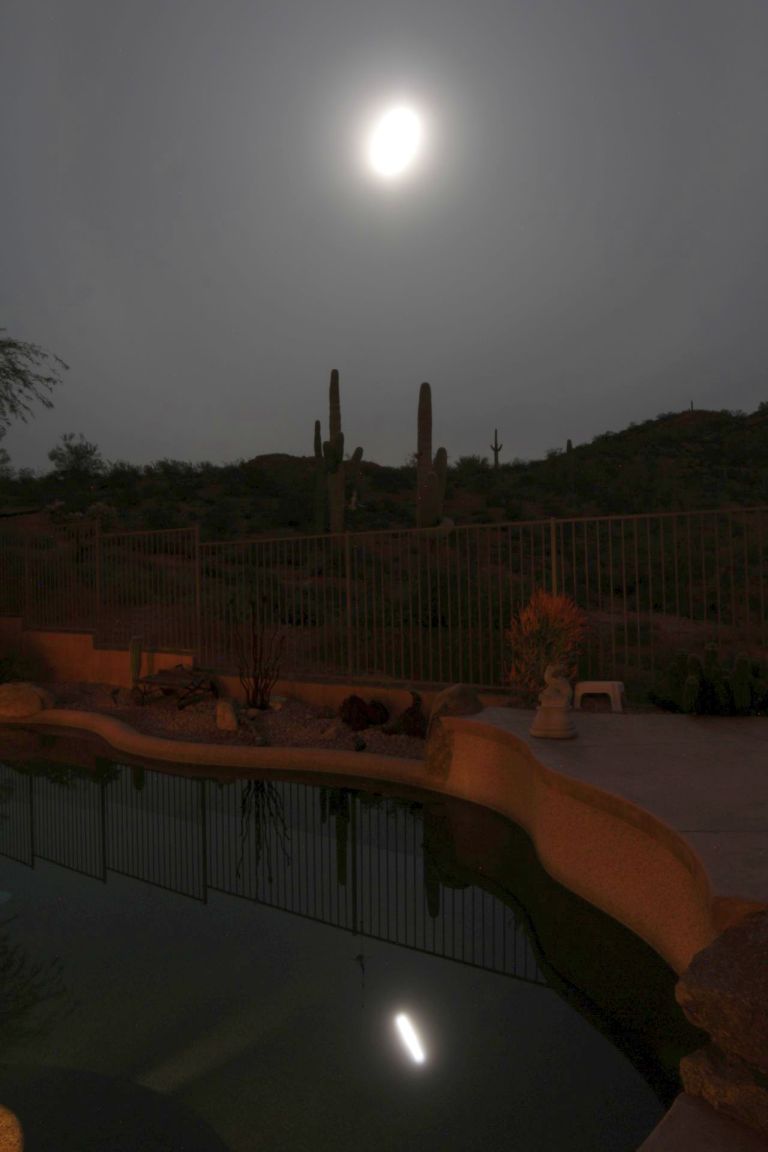
I decided to use my widest angle lens, a Rokinon 14mm f/2.8 lens, that has a field of view of 114 degrees. I mounted the lens vertically on my tripod and used a battery eliminator to take this 12 minute exposure of the moon in the sky and its reflection from the surface of our pool, at an ISO setting of 100 (my lowest) and an f ratio of f/22 (my highest), hoping that such a long-duration exposure would not generate an over-exposed result, at least for the pool-reflected portion. The test of the idea would come the next night. Notice on the image below how the diurnal motion of the sky causes the Moon, and its reflection, to make wide bright lines (or paths) rather than distinct circular images.
Concerning the above image, I used a battery eliminator to power my Canon T4i digital single lens reflex camera (DSLR) instead of the "regular" battery because I intended to take long-duration time exposures and even a lithium battery might not supply adequate power to the camera for that length of time. This is true for all images on this web page.
The next night, the night of the lunar eclipse, was very cloudy, although the clouds were variable and moving, with occasional dense and less-dense areas. There were no winds at ground level, so the surface of the pool was quiet and reflective. The 114 degree width of the lens field was not going to be adequate for capturing both the entire 3-hour sky eclipse and its reflection, so I decided to photograph the pool-reflected image from the start of the eclipse to mid-totality and the sky portion of the eclipse from mid-totality to the end of the eclipse. Those images follow.
The image below is a 2 hour (120 minute) exposure at ISO 100 and f/22 through the 14mm wide-angle lens of the reflected moon image from just before the start of the eclipse.

On the pool-reflected 120 minute image above, the eclipsed image starts away from the camera and moves toward it over time. When the clouds thin, the changing shape of the moon can be seen.
On the sky 102 minute image below, the picture starts in mid-totality and proceeds to a completely exposed full moon. It was cloudy throughout this period. Notice the very faint, and very red, light trail during totality.
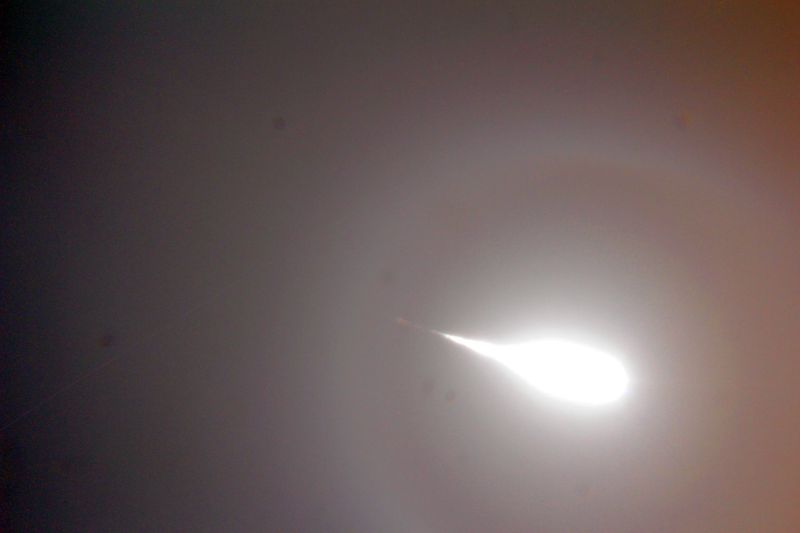
The image above shows the portions of the eclipse during totality and continues until the moon has fully exited the umbra of the Earth's shadow. But also shown are two haloes around the moon: a 22 degree halo and a 46 degree halo. Both are formed by light from the moon being refracted (bent) by ice crystals in the clouds. The 46 degree bending is the minimum deviation of light that passes into and out of a 90 degree surface of the ice crystal, and the 22 degree halo is caused by light that travels through ice surfaces that are at a 120 degree angles to each other. The ice crystals in the clouds have different shapes and settle toward earth in different orientations, leading to halos of different sizes. If the cloud ice crystals are in the shape of plates, the 46 degree halo is the more likely result because the plates settle through the air like autumn leaves settling to the ground, and this preferrentially exposes the 90 degree angle of the plate edge to the passing light. Conversely, if the ice shape is like a thin needle, the needles settle with the long axis in a roughly horizontal orientation, which makes the 22 degree halo more likely because this preferrentially exposes the 120 degree angle of the needle faces to the passing light.
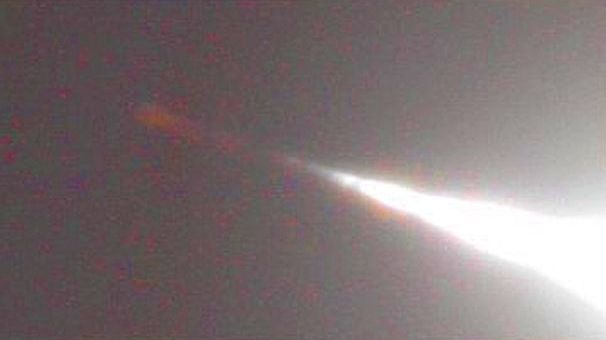
The picture above is an enlargement of the portion of the previous image that shows totality. The ruddy red color of the darkened illumination is easily seen.
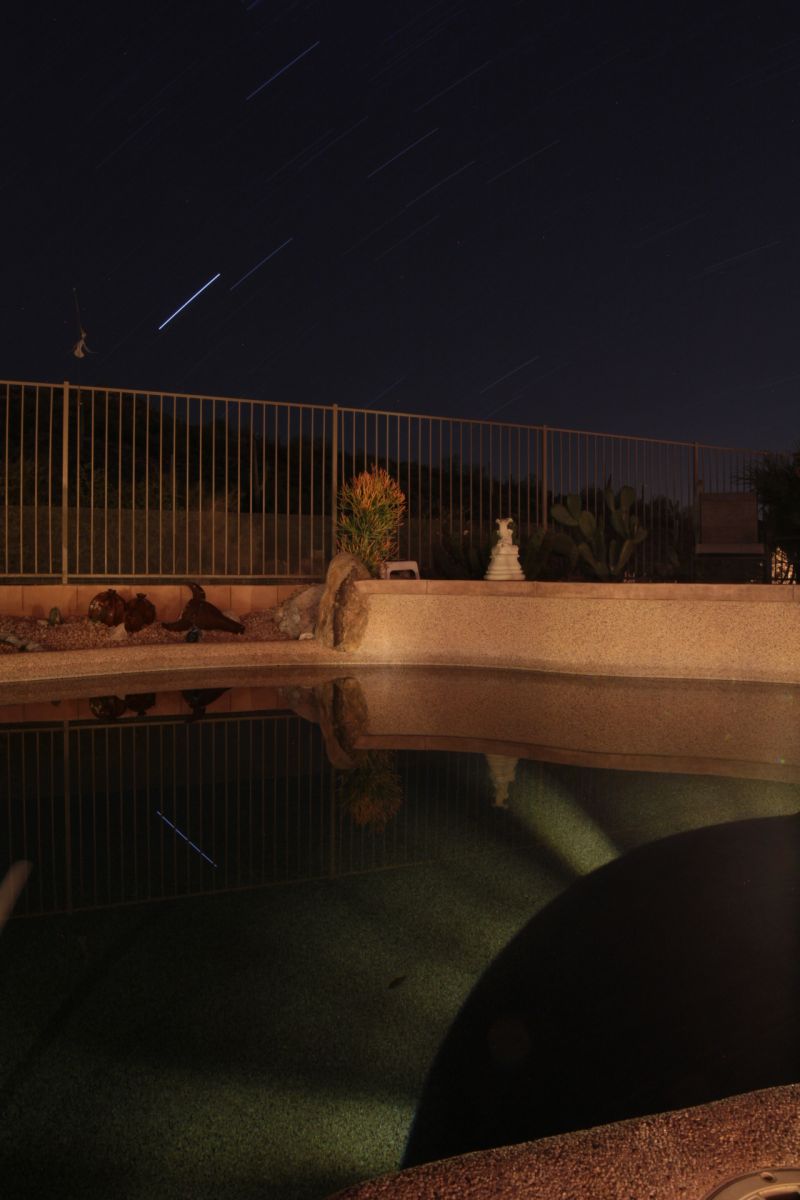
I took the above picture on a subsequent night when there was no moon and when the weather was clear. It is a 23 minute exposure with my 14mm wide-angle lens that shows the rising of the bright star, Sirius. Some of the bright stars in the constellation Orion can just be seen. My camera was set to an ISO of 100 and at f/2.8.
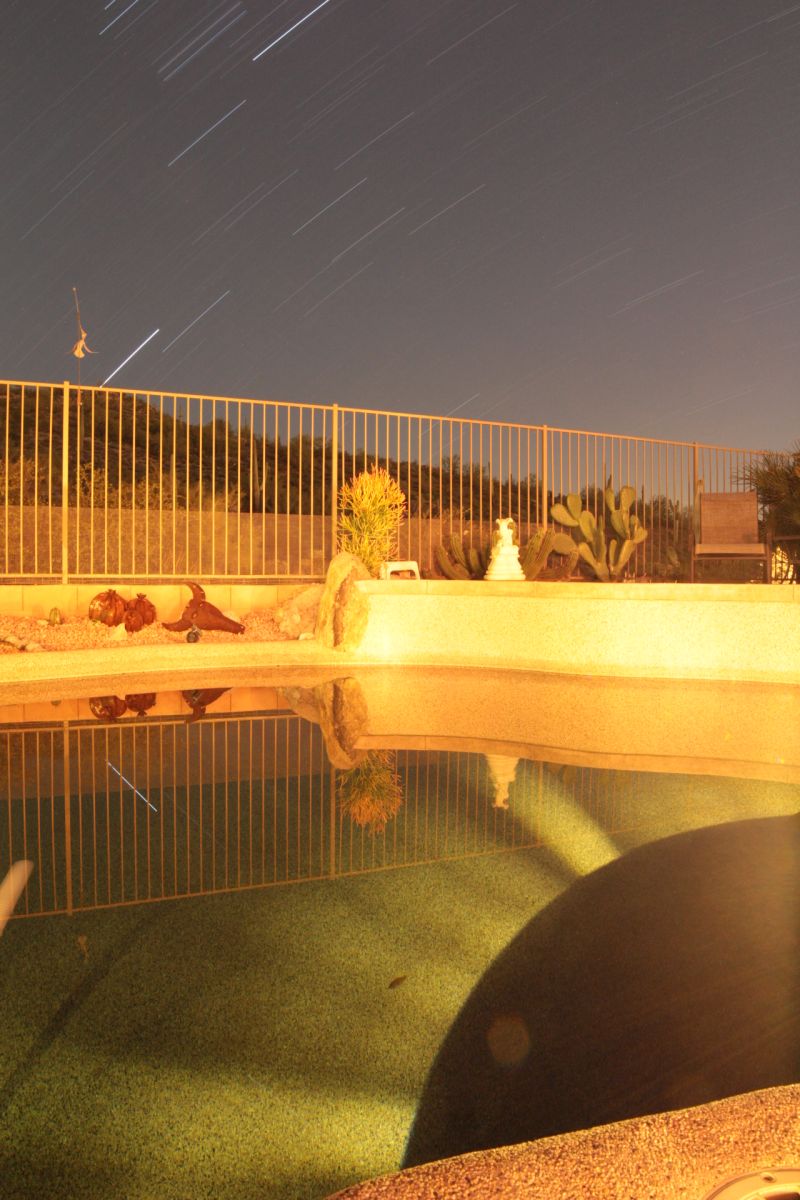
I repeated the conditions of the previous picture but this time the exposure was 26 minutes at an ISO setting of 400.
-------------------------------------------
Explanations of "Super Wolf Blood" Moon
Super: the Moon is at or near its perigee (closest point) in its elliptical orbit about the Earth, so it appears larger than average and, consequently, also brighter than average.
Wolf: the first full moon of the new year.
Blood: during totality white light from the sun passes through the Earth's atmosphere and the normal process of scattering (which produces common red sunsets on the Earth) depletes the shorter wavelengths (blue) more than the longer wavelengths (red). This depleted and reddened light is refracted (bent) slightly in its passage through the Earth's atmosphere to provide a faint red illumination of the fully eclipsed and otherwise totally dark moon.
-----------------------------------------------
The Earth's shadow is visible every day.
Click HERE to jump to my "Antitwilight Arch" web page that shows and explains this effect.
---------------------------------------------------
Eclipse Specifics for Gold Canyon, AZ
Here are the Gold Canyon, AZ, specifics of the 20 January 2019 total lunar eclipse. This information was supplied by Bill Dellinges of the Superstition Mountain Astronomical League.
Time Schedule (MST)
| Partial eclipse begins |
8:34 P.M. |
| Total eclipse begins |
9:41 P.M. |
| Total eclipse ends |
10:44 P.M. |
| Partial eclipse ends |
11:51 P.M. |





